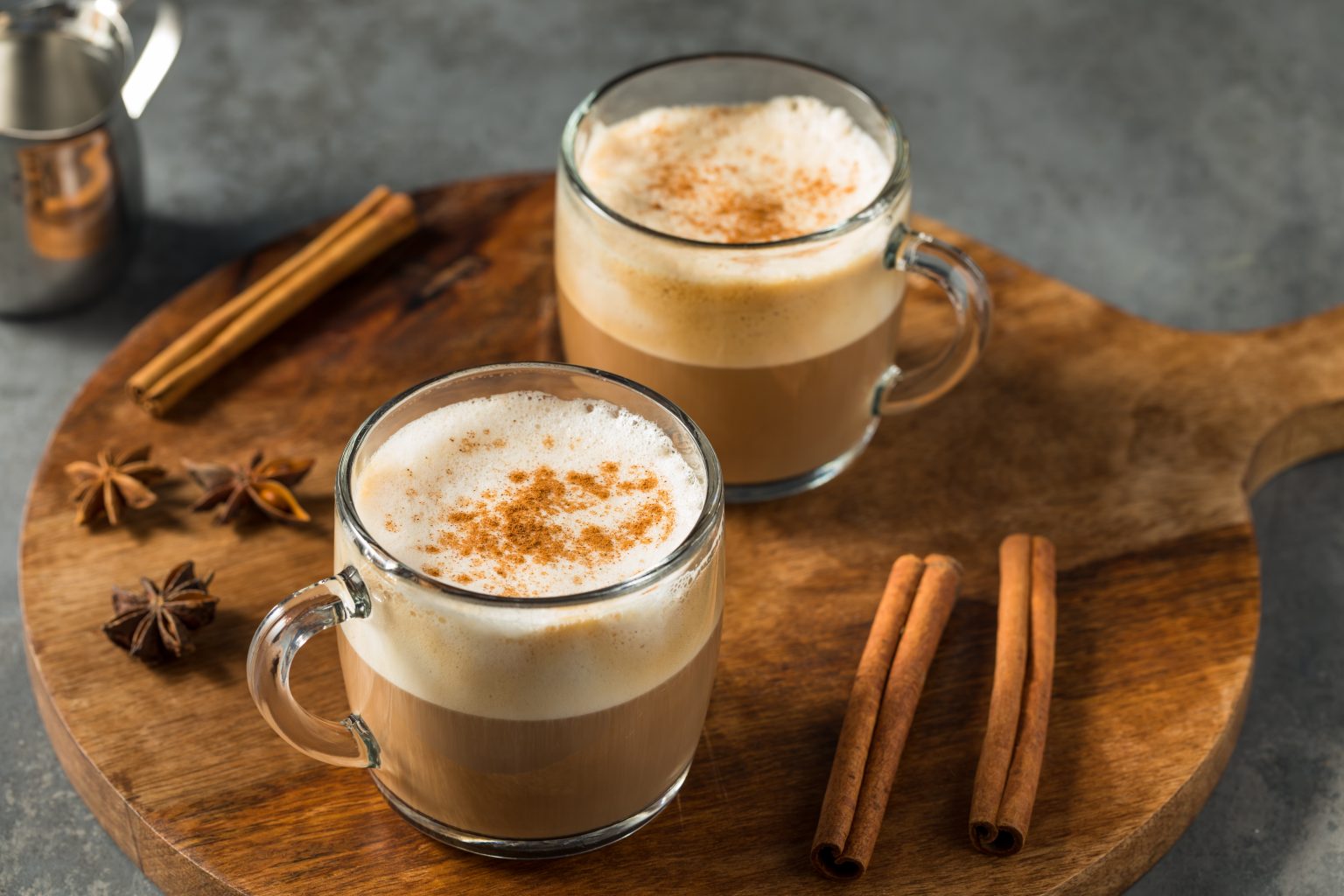A chai latte is a unique drink that has captured the hearts of many beverage enthusiasts. This spiced drink is primarily made with steamed milk and a blend of traditional Indian spices. The taste of a chai latte is both sweet and spicy, combining creamy milk with the warmth of spices like cinnamon, cardamom, ginger, and cloves.
Much of a chai latte’s charm comes from its carefully balanced ingredients. The black tea base gives it a robust body, while the spices add layers of complexity. Sweetened with sugar, honey, or maple syrup, it provides a delightful contrast to the spicy notes, creating a comforting and invigorating experience.
For those eager to recreate this experience at home, the recipe is quite accessible. You only need black tea, milk, and a selection of warming spices. Whether enjoyed on a chilly morning or as an afternoon pick-me-up, a chai latte offers a rich and flavourful escape from the ordinary.
The Distinctive Flavour Profile of Chai Latte
Chai latte is a rich and aromatic beverage that combines black tea with a blend of spices, sweeteners, and milk. This combination gives it a unique taste that balances warmth, sweetness, and creaminess.
Key Spices and Their Impact on the Palate
Chai latte typically includes a blend of cinnamon, cardamom, ginger, cloves, and sometimes nutmeg or vanilla.
- Cinnamon: Adds a warm and sweet flavour.
- Cardamom: Brings a touch of citrus and herbal notes.
- Ginger: Provides a spicy kick.
- Cloves: Introduces a sweet and slightly bitter taste.
- Nutmeg and vanilla: Add depth and richness.
These spices create a complex and fragrant mix that engages the senses and leaves a lingering warmth.
Sweetness and Its Role in Chai Latte
Chai lattes often contain sweeteners like sugar, honey, maple syrup, or brown sugar.
Sweetness enhances the spices’ natural flavours, softens the tea’s bitterness, and balances the milk’s creaminess.
Honey and maple syrup add a floral and earthy tone, respectively, contributing to a more natural sweetness.
Brown sugar lends a hint of molasses, amplifying the drink’s depth.
Texture and Consistency
The texture of a chai latte is silky and creamy. Steamed milk and tiny air bubbles make the drink light and velvety, coating the mouth smoothly. Foam on top adds another layer of richness.
Different types of milk, including almond or soy, can alter the texture. A well-made chai latte feels luxurious, combining creaminess with the robust texture of black tea. The interplay between the spices, sweeteners, and milk creates a balanced drink that’s both comforting and satisfying.
Preparation and Variations
Chai lattes are loved for their unique blend of spices, creamy texture, and rich flavours. This section breaks down how to brew a traditional chai latte, explores modern variations and dietary adjustments, and offers serving suggestions to enhance the experience.
Traditional Brewing Techniques
Traditional chai lattes start with black tea brewed in a small saucepan of water. Chai spices like cinnamon, cloves, cardamom, and ginger are added, infusing the tea with warm, aromatic flavours.
The tea is often sweetened with honey or sugar syrup before adding boiled milk or cream. The mixture is then heated together until it reaches a frothy, creamy texture.
A milk frother can be used to achieve this texture, making it smooth and velvety. Some traditional methods involve using loose leaf tea and whole spices, which are simmered together and then strained.
Modern Twists and Dietary Adjustments
Modern chai lattes feature various plant-based milk options like almond milk, soy milk, and oat milk for a vegan version. These alternatives provide different levels of creaminess and adjust the nutritional content.
Iced chai lattes are a popular variation, where the spiced tea is cooled and served over ice with milk. Adding a shot of espresso creates a dirty chai latte, blending caffeine with traditional chai flavours.
Vanilla extract or flavoured syrups can enhance or change the flavours to suit individual tastes. Experimentation with different sweeteners including agave or maple syrup allows for customisable calories and taste preferences.
Serving Suggestions
Chai lattes are typically served warm, in large mugs, often with a light dusting of cinnamon on top. For an extra touch, whipped cream can be added. Homemade chai lattes can be paired with snacks such as biscuits or pastries for a more indulgent treat.
They can also be served iced for a refreshing summer beverage. Garnishing with a cinnamon stick or a sprinkle of nutmeg adds visual appeal and extra aroma.
Properly frothing the milk creates a delightful, smooth texture that enhances the overall drinking experience. Offering chai lattes alongside other beverages makes for a versatile menu in any café.



